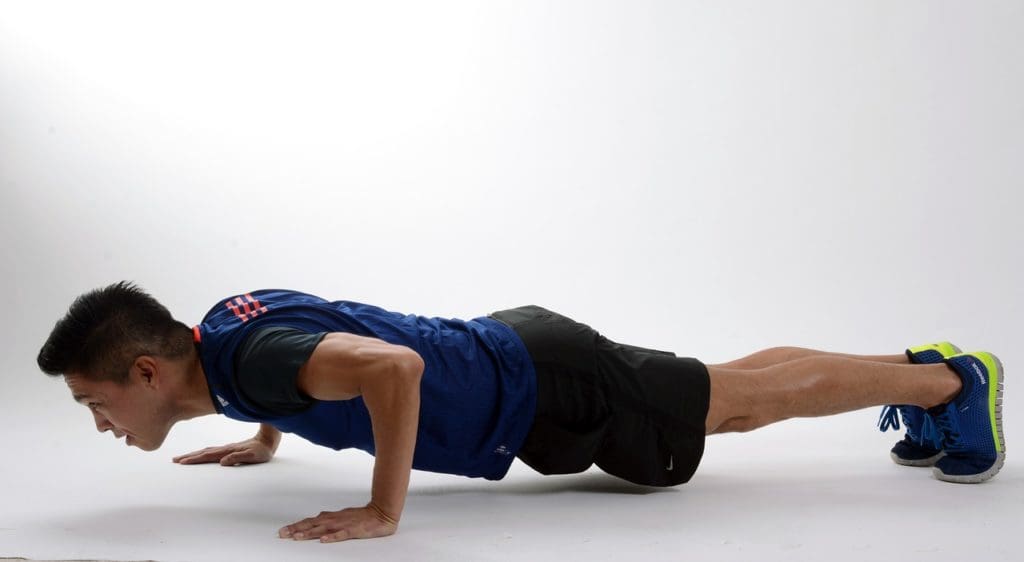PT PRO TIPS: The Top 5 Exercises You Should be Doing According to Physical Therapists


If you’re one of the many people who made a resolution to get fit and active this year, you may also be one of the many people who are struggling to find the time and energy to stick to a workout regimen. Between work and family obligations, it can be hard to find time to get active. Worse yet, even if you have the time, it can be just as difficult to sift through the endless articles, advice and routines by purported “experts” online. Where to even start?
Physical therapists are the real muscular skeletal experts, so we asked some of our PTs for their favorite home exercises that are effective and efficient. We want to take the guesswork out of exercise so that you can maximize your workouts and your time!
1. Squat your age a day
Squats are one of the most efficient exercises you can do, because they work so many different muscles at once. If done properly, a good squat can work your work quads, hamstrings, glutes, abdominals, calves, hip abductors, and more! Start with your feet slightly wider than shoulder width and imagine you’re sitting back into a chair. Make sure to keep your hips and butt low and your chest up to maintain good form. Over time, you can increase the intensity by squatting lower, completing more reps, and potentially adding weight.
2. Gain power through pushups


Pushups are one of the simplest and best exercises for upper body strength and toning, working the triceps, pectoral muscles, shoulders, and abdominal muscles. If you’re just starting a new fitness regimen, you might have to start out on your knees, but if you’re consistent, you should be able perform pushups from your toes in no time. By increasing the amount of pushups you can do at a time, you’ll see a steady increase in strength. What’s more – pushups are versatile, allowing for modifications in hand and feet position to increase intensity and target different muscles. Once you master the regular form pushup, try the seal pushup, the diamond pushup and staggered hand pushups.
3. Give thanks for planks
Planks are one of the most effective abdominal exercises, even more so than crunches and sit ups, and with way less pressure on your back. Not only will planks work your abs, but they’ll strengthen your entire core and lower back, which improves stability, reduces your chance of injury, and maintains mobility. Just like pushups, there are a ton of variations of planks: low plank, high plank, side plank, shoulder taps, etc. Google different modifications and try holding for 30 seconds to a minute at a time, 3-5x per day – you’ll see and feel the benefits in no time!
4. Bridge with arms overhead
Bridges are another great lower body exercise that also work your core and lower back. Start by laying on your back with your feet planted evenly on the ground. With your arms overhead, make a fist and punch it into the ground as you lift up your hips and squeeze your glutes. This recruits the long cervical extensors and thoracic extensors necessary for good posture. For optimal glute activation, keep your knees wide and push your heels into the ground. At the top of the movement, hold it and take a few breaths to utilize the diaphragm. Like the squat, the bridge recruits multiple leg muscles – making it effective and efficient!
5. Jump for joy, it’s jumping jacks!
There’s a reason why boxers, athletes, and military members utilize jumping jacks in their workouts – they are one of the easiest ways to get in some cardio from anywhere. Jumping jacks are a form of plyometrics, or jump training, which is an efficient way to combine aerobic exercise and resistance training. Not only are you getting your heart rate up, but you’re working your whole body, especially your glutes, quadriceps, and hip flexors. In addition, you’re also stretching out your shoulders as you lift your arms over your head and using your abdominal muscles to stay balanced. There are different variations you can try to challenge yourself, but sticking with the basics is an effective way to burn calories, get your heart racing and activate muscles throughout your body.
BONUS TIP:
Try putting your shoes on from a standing position. While it’s not technically an exercise, it surprisingly takes a good amount of balance, glute recruitment, and core control in order to accomplish, while also challenging mobility and flexibility. It is a great indicator of overall fitness level!
